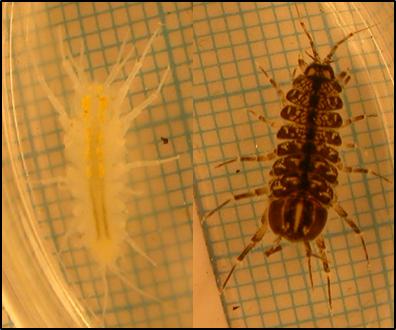Dispersive trait expression of Asellus aquaticus in a rare cave habitat
Dispersal influences several ecological and evolutionary processes, such as intraspecific competition, genetic drift and inbreeding. It can lead to phenotypic mismatch with the habitat when a locally adapted individual winds up in an environment with a divergent selection regime compared to the source habitat. The aim of this project was to compare dispersive traits in the freshwater isopod Asellus aquaticus from a cave habitat, with surface dwelling isopods collected upstream and downstream from the cave system. The subterranean stream (cave) represents a rare, geographically limited habitat which has a divergent selective pressure compared to the surrounding habitats. Experiments on dispersal were performed in the laboratory, in darkness with IR-equipment for visualization. Displacement was measured using one-dimensional test arenas. Compared to the surface phenotype, the cave phenotype was expected to have reduced fitness outside of the cave and unlikely to successfully disperse to new areas of similar suitable conditions. The results did not follow my main hypothesis that isopods from the cave would be less dispersive than individuals from the surface. The inconclusive results might derive from large variation in the data and divergent adaptations which yield similar expression of dispersal.

Responsible for this page:
Director of undergraduate studies Biology
Last updated:
06/24/16
